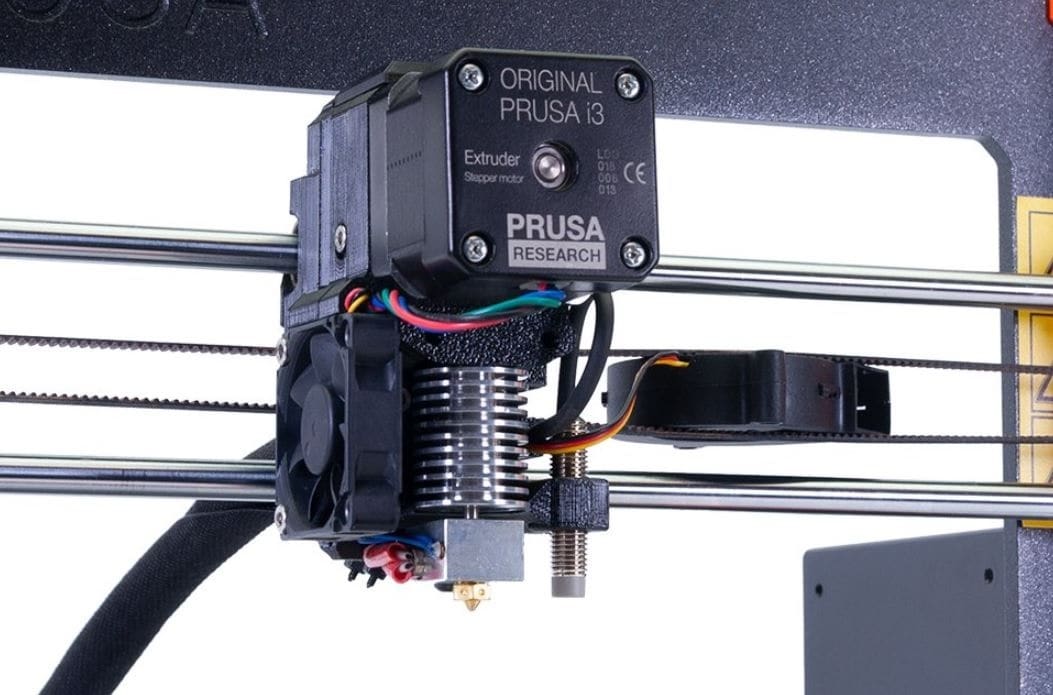If you’ve ever set up or worked with a 3D printer, then you probably know how many individual components go into the machine properly functioning. Many of these components are geared towards the machine’s motion on the X-, Y-, and Z-axes.
Some pieces are meant for the hot end, which is the assembly on your printer where filament is heated and extruded through a nozzle. The hot end parts are pretty small and usually include the PTFE coupler, heat break (hot end throat), heater block, nozzle, and more.
It’s important to note that these parts are on most “standard” 3D printer hot ends, like ones seen on the Ender 3 and Prusa i3 MK3. However, some hot ends have slightly different configurations, like machines from XYZPrinting, which keep the nozzle, heater block, and throat as one main component.
Keeping Things Cool
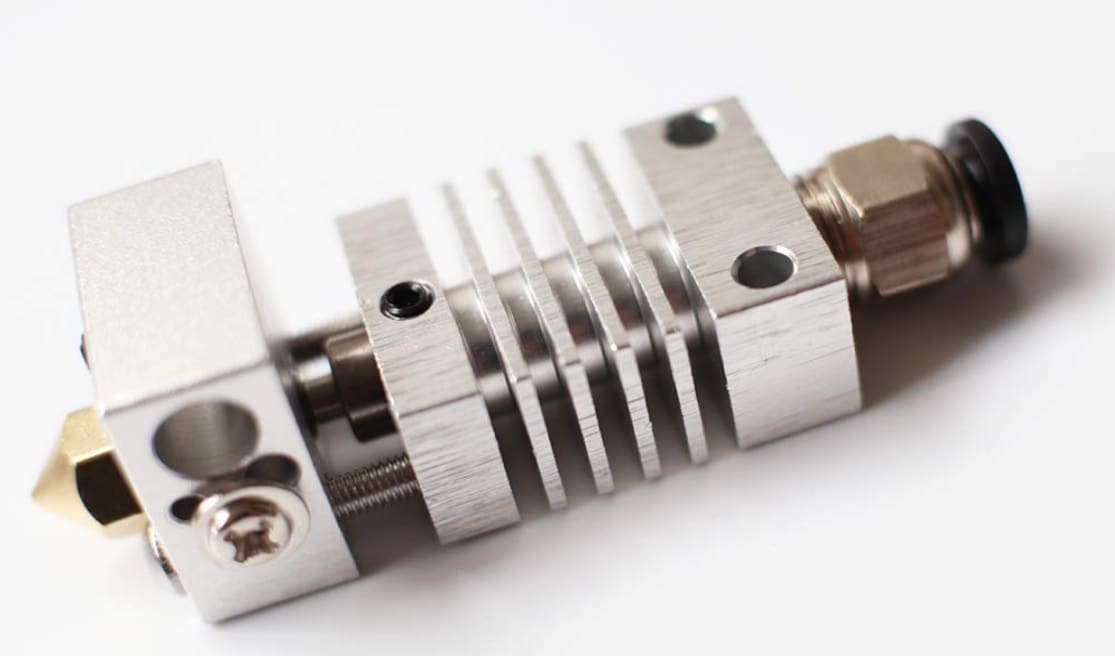
One crucial part of the hot end is the heatsink. A heatsink is a structure, usually made from metal, that spreads out and dissipates heat in the hot end to prevent overheating in certain areas. Heatsinks are vital to good performance in the hot end, as jams can occur if they aren’t present or are dysfunctional.
In appearance, most heatsinks feature an array of thin walls pointed in the same direction or in two directions, often resulting in a sort of ribbing. However, some more advanced heatsinks have precise direction changes or curves in the walls to enhance performance. Heatsinks are located on the printhead above the nozzle and heater block to effectively cool the area where the filament flows before it reaches the heater block.
In this article, we’ll go over the heatsink component on 3D printers. First, to provide some background, we’ll go over how a hot end works and then segway into the role of a heatsink; after, we’ll look at some problems, solutions, and examples of this part. Enjoy and stay cool!
How Hot Ends Work
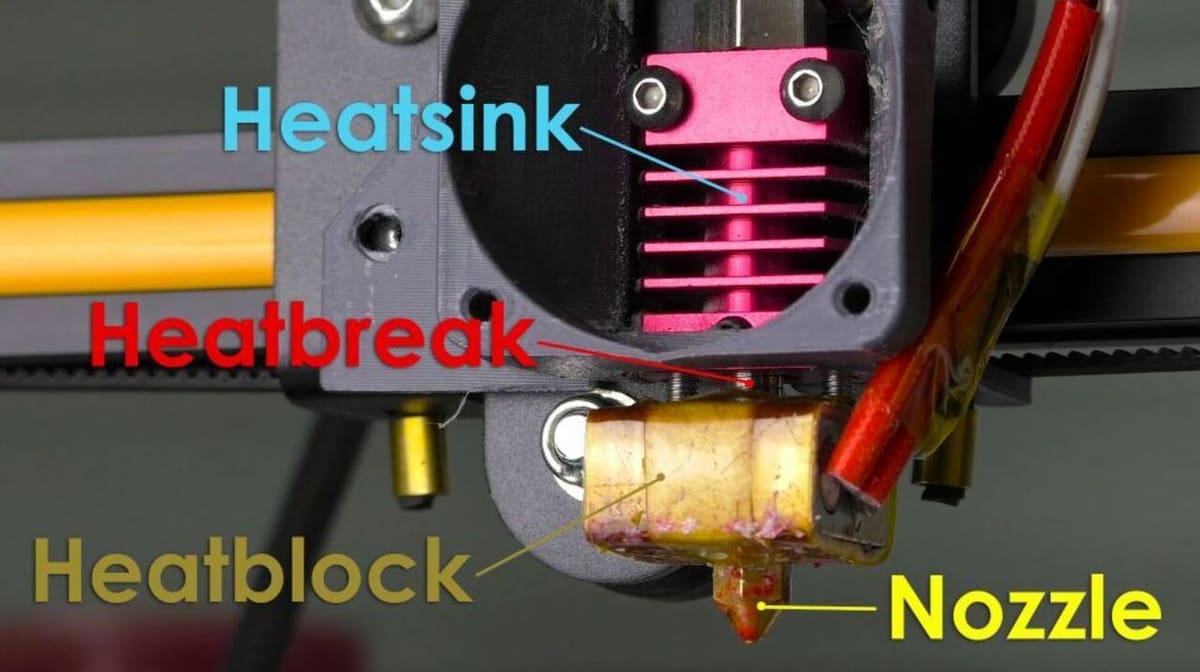
To begin with, learning about what a hot end is and how it works may help you understand the importance of a heatsink. If you’re unfamiliar with the term, the “hot end” refers to the assembly of heating and filament-related components that facilitate the filament-melting process.
Like the ones seen on the Ender 3 or Prusa i3 MK3S, a standard hot end involves a small army of parts. These usually include a PTFE tube (Bowden tube), tube coupler, heat break (usually PTFE-lined), heater block, thermistor, heating cartridge, nozzle, and, of course, the heatsink.
Once past the extruder, filament travels inside the PTFE tube, which connects to the hot end via the PTFE tube coupler. The PTFE tube actually continues its path, past the coupler and through the heat break – a metal tube usually with a PTFE liner (unless you have an all-metal hot end) for further temperature insulation.
The heat break is almost always surrounded by our part of interest, the heatsink, which is used to passively cool the heat break and the filament traveling through it. Continuing through the process, the heat break connects to the top side of the heater block, where the thermistor and heating cartridge wires are inserted. The PTFE tube’s journey ends when it touches the base of the nozzle, which is screwed in on the bottom side of the heater block.
When filament needs to be extruded, the heating cartridge warms the heater block until it reaches the desired temperature. Then the extruder (separate from the hot end) pushes the filament through the PTFE tube, past the coupler, and through the heat break.
Ideally, the filament stays (relatively) cool in the hot end when encapsulated in the PTFE tube until it leaves the tube and meets the nozzle. Once the filament reaches the nozzle, it melts inside, and the pressure from the pushed filament squeezes material out of the nozzle.
Where the filament touches the nozzle and below, it has reached the “melt zone”, meaning it’s only meant to melt in this area. If it melts prior to this point, it has a chance of cooling back down and solidifying, thus blocking any further extrusion. This problem is known as heat creep and is a type of hot end jam.
All-Metal Hot Ends
All-metal hot ends are a specific type of hot end where the heat break has no PTFE liner. While this type of hot end may be more prone to heat creep and hot end jams, it can reach higher nozzle temperatures. That’s because the PTFE liner inside the heat break can burn when the hot end gets too hot, releasing toxic fumes.
For this reason, a heatsink is even more critical for all-metal hot ends as the extra layer of temperature insulation for the filament that the liner provides is gone. So, if you have this type of hot end, make sure that you have a heatsink and that it’s adequately providing quality cooling to your heat break.
The Heatsink
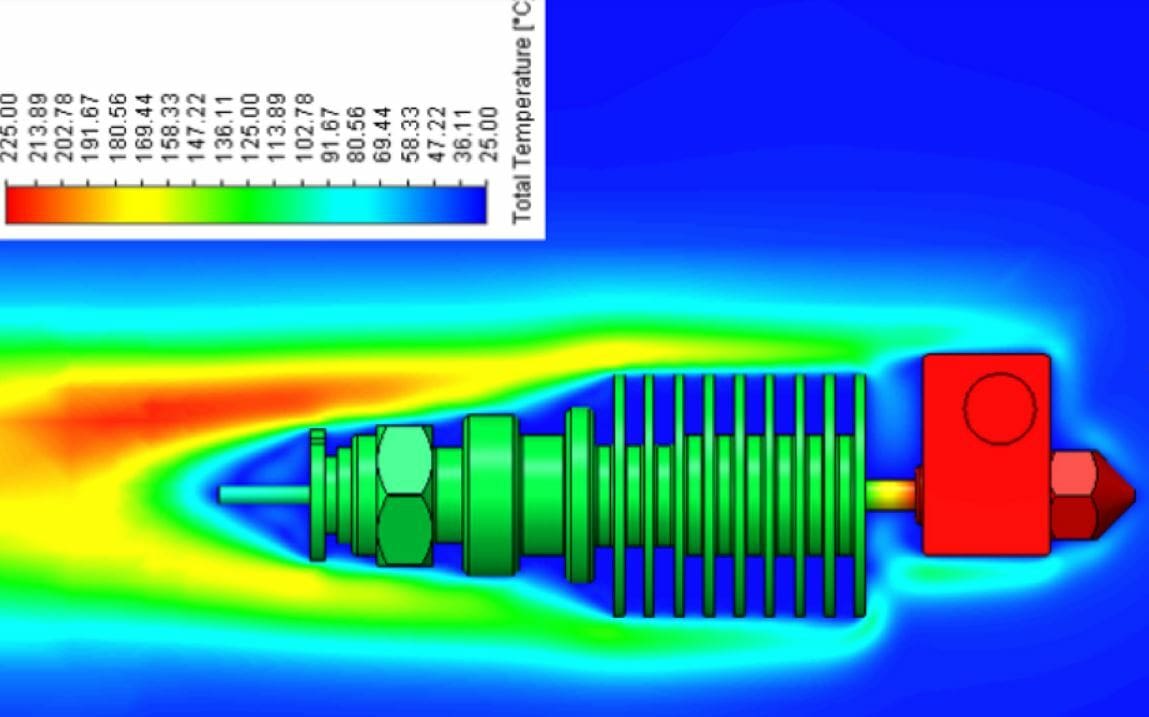
Heatsinks, in general, are a method of passive cooling that dissipates heat away from an object, like a graphics card or processor chip in a computer. The heatsink will absorb heat from the object it’s attached to without an active device like a fan or a water cooling device. The effectiveness of a heatsink depends on its size: The larger the surface area of the heatsink, the more space it has to disperse heat, making it more helpful.
A heatsink’s main role on a hot end is to spread heat away from the filament’s path when it’s outside of the “melt zone”. As mentioned, the heatsink surrounds the heat break and its passive cooling helps prevent heat creep hot end jams. Without one, the filament might reach too high a temperature before or in the heat break, which would lead to a hot end jam.
One problem is that the heatsink and almost every other component on the hot end are made of metal, so heat travels through very easily. Essentially, the solution to prevent heat creep is also the cause of the issue because heat can still get through. Despite this, a heatsink still cools filament and somewhat prevents heat creep – more so than if you didn’t use one.
In most printhead setups, the other role of a heatsink is to supply the hot end with a sturdy structure and connect the PTFE coupler with the heat break, the heater block, and the nozzle. Without a heatsink, another connecting structure would be necessary so that all the different, small components of a hot end could be assembled.
Other Considerations
Besides the surface area and size of a heatsink, other factors can also play a role, such as the part’s structure. If a heatsink’s walls are angled precisely to move heat and airflow in a certain way, this will better cool down a part. That’s why companies like E3D sell specially-designed heatsinks that work better than more generic ones, like the heatsinks on Creality printers.
To more effectively use a heatsink, you should consider installing a hot end fan that rests on the side of your heatsink, with the airflow pointed towards the heat break. This will cool down the hot end, allowing it to continue to absorb heat from the heat break. The fan will also directly cool the heat break itself if airflow reaches it.
Overall, heatsinks are a vital part of any 3D printer hot end mainly because they dissipate heat to prevent heat creep from occurring. However, this isn’t the only reason heatsinks are necessary as they’re also used to connect all the small pieces of a hot end.
Problems & Solutions
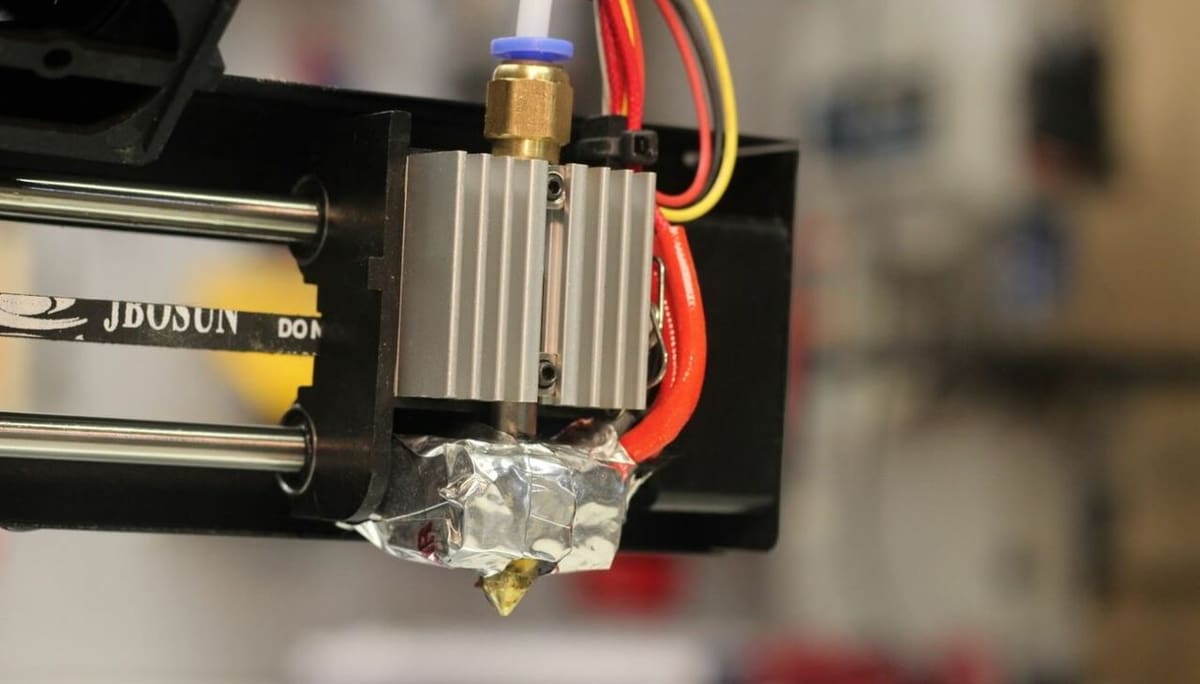
Because heatsinks aren’t all perfect and problems may arise, we’ve listed a few common issues and their solutions below:
- Heat creep: Heat creep takes place when heat climbs up the hot end (the heatsink doesn’t block it) and melts material before the melt zone. To fix this, you can add a controllable fan to your heatsink so that both activate and passive cooling prevent heat creep.
- Dusty heatsink: When dirty, heatsinks have been known to be less effective in passively cooling the hot end. Ensure that you clean dust, dirt, and grime every so often off the heatsink to keep it as functional and effective as possible.
- Incompatible: Incompatibility for heatsinks usually happens when your heatsink doesn’t fit on your printer’s printhead carriage or items like a Bowden tube coupler or heat break don’t screw in properly. To fix this problem, you can either change your other hardware so that it fits on your new heatsink or you can get a different, compatible heatsink.
Examples
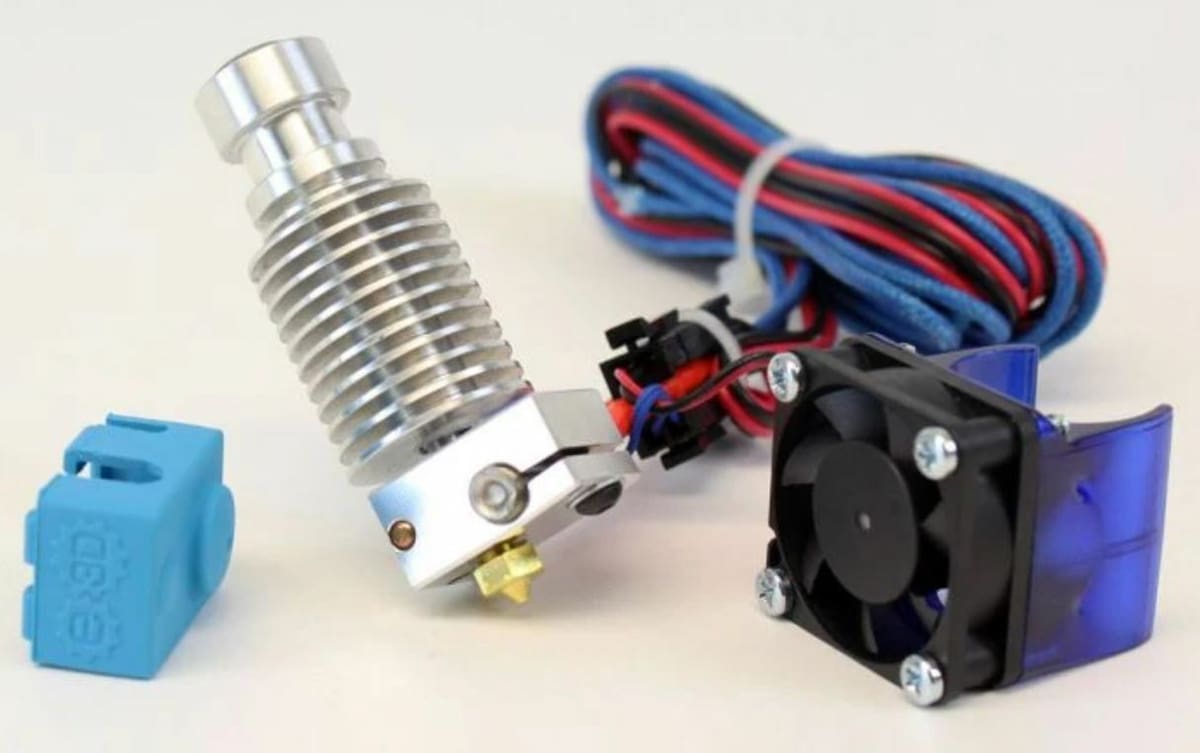
Heatsinks vary in price depending on what material they’re made of, the brand, size, and other factors, but they typically cost between $10 and $20 (some retail for over double that amount). Below, we’ve listed a few examples of popular heatsinks that you can use:
- E3D Hemera Heatsink
- E3D Universal V6 Heatsink
- Standard Creality Heatsink
- Slice Engineering Copperhead Heatsink
Lead image source: Matt Smith via Electronics Cooling
License: The text of "3D Printer Heatsink: How to Prevent Heat Creep" by All3DP is licensed under a Creative Commons Attribution 4.0 International License.
